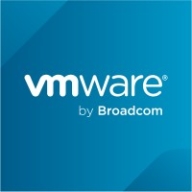

VMware vSAN and Azure Stack HCI are competing products in the hyper-converged infrastructure category. VMware vSAN holds an edge due to its robust integration within VMware's ecosystem and comprehensive scalability, while Azure Stack HCI is favored for its Azure service integration and hybrid cloud capabilities.
Features: VMware vSAN offers robust scalability, seamless integration with VMware environments, and policy-based management to enhance virtualized workloads. It provides a cohesive virtual environment through integration with VMware solutions like vSphere and vCenter, enabling efficient management. Azure Stack HCI allows for easy hybrid cloud deployment, integrates with Azure services for optimized management, and supports Azure Kubernetes Service (AKS) for convenient microservice deployments within data centers.
Room for Improvement: VMware vSAN could improve its cost-effectiveness and licensing structure, which might be challenging for smaller enterprises. Additionally, its reliance on VMware-specific solutions might limit cross-platform flexibility. Azure Stack HCI can enhance its initial setup complexity, better streamline integration with legacy systems, and expand its ecosystem compatibility to rival other solutions more effectively.
Ease of Deployment and Customer Service: VMware vSAN provides seamless deployment within existing VMware environments, with comprehensive support aimed at VMware clients, enhancing user experience. Azure Stack HCI benefits from straightforward deployment aided by Azure's supportive resources and infrastructure, proving advantageous for businesses already utilizing Azure services and may enhance support mechanisms for non-Azure users.
Pricing and ROI: VMware vSAN’s pricing might involve higher initial costs but offers significant ROI due to performance optimizations in VMware-centric setups. Azure Stack HCI provides competitive pricing and delivers attractive return prospects, especially for enterprises leveraging Azure cloud efficiencies, impacting long-term strategic planning in diverse financial contexts.
There has been some return on investment in terms of just time usability and reduction of footprint.
I have seen a return on investment; it's satisfactory in the long run.
Starting with a smaller infrastructure and scaling as required allows us to save costs initially.
Not every support team member is very knowledgeable about Azure Stack HCI, creating delays in resolution.
I would rate their support nine points.
I am not satisfied with VMware support, particularly with the reaction times, SLAs, and those kinds of issues.
Sometimes the issue is that you don't get the best experience, whether it's the response time or first-level support quality.
It supports up to 64 nodes in a cluster, allowing us to add nodes and expand the cluster as needed.
It does not feel like a well-oiled machine yet, with too many idiosyncrasies and insufficient documentation and integration, feeling more like software that is still in beta.
In terms of stability, I give VMware vSAN nine points.
There are discrepancies between managing VMs through Azure Arc versus managing them directly, as changes made not using the Azure Arc integration are not easily reflected in Azure Arc.
Hyper V seems to lag behind compared to VMware.
A proper monitoring tool that encompasses both applications and infrastructure would help in quickly resolving issues.
Maybe incorporation of automation to build clusters in a more automated way would be beneficial.
The licensing is quite expensive because it's per call.
This has resulted in a slight cost increase.
The integration with Azure using Azure Arc is excellent.
Hot add features are available by default in vSphere, allowing us to immediately increase memory, CPU, and hard drive without any downtime.
The VMware vSAN feature that has had the greatest impact on operational efficiency is the basic software-defined storage functionality.
A one-stack solution from one vendor is the main benefit here.
| Product | Market Share (%) |
|---|---|
| VMware vSAN | 13.9% |
| Azure Stack HCI | 3.7% |
| Other | 82.4% |


| Company Size | Count |
|---|---|
| Small Business | 4 |
| Midsize Enterprise | 1 |
| Large Enterprise | 2 |
| Company Size | Count |
|---|---|
| Small Business | 98 |
| Midsize Enterprise | 58 |
| Large Enterprise | 128 |
Azure Stack HCI efficiently integrates software-defined networking and Azure Kubernetes Service, offering a streamlined hybrid setup for VM management while maintaining top performance.
Azure Stack HCI enhances data center operations with high-end processors and storage, optimal Kubernetes support, and integration with Azure Arc and Azure Site Recovery. High application density in four-node configurations improves both time and infrastructure efficiency. Despite its strengths, the platform can improve in areas like software-defined networking, operational management, and simplifying deployments, which currently rely on PowerShell. Users often desire better training and integration with Microsoft Azure Portal, along with multi-cluster capabilities and storage architecture enhancements. Improvements in Hyper V virtualization are also needed to match competitors like VMware.
What are the key features of Azure Stack HCI?In sectors like government, Azure Stack HCI is crucial for running secure on-premise services with selectable Azure features to ensure data privacy. Businesses leverage the platform for VM creation, management, and monitoring through Windows Center, alongside Kubernetes production environments. Connectivity with Azure allows for smoother cloud transitions, appreciated for its dashboard manageability and substantial network capacity.
VMware vSAN is a software-defined storage product that is used in collaboration with VMware ESXi hypervisor and that provisions and manages storage based on policies, regardless of the underlying hardware. The solution enables you to prime your business for growth through its seamless evolution (it is integrated with vSphere and requires no new tools), its flexibility, and its multi-cloud capabilities. As an industry-leading software, VMware vSAN provides high levels of performance with minimal impact on CPU and memory.
VMware vSAN Features
VMware vSAN has many valuable key features. Some of the most useful ones include:
VMware vSAN Benefits
There are many benefits to implementing VMware vSAN. Some of the biggest advantages the solution offers include:
Reviews from Real Users
Below are some reviews and helpful feedback written by PeerSpot users currently using the VMware vSAN solution.
PeerSpot user Yves S., CEO, Cloud Evangelist at Comdivision Consulting GmbH, says, “vSAN gives us a lot of advantages when we need to expand resources. We have an overall larger host infrastructure, and we split that up for specific customer test and use cases. In that specific scenario, we can easily add more hosts or reduce the number of hosts in the environment.”
A reviewer who works in Infrastructure Security explains, “The ease of use is great. The initial setup and upgrade process was pretty straightforward. And, technical support is great.”
Laurent N., Director at Softlogic, comments, "The feature that I have found most valuable is that it is easy to deploy. It is easy to create and delete virtual servers. It is easy to create the load balancing and the clustering."
We monitor all HCI reviews to prevent fraudulent reviews and keep review quality high. We do not post reviews by company employees or direct competitors. We validate each review for authenticity via cross-reference with LinkedIn, and personal follow-up with the reviewer when necessary.